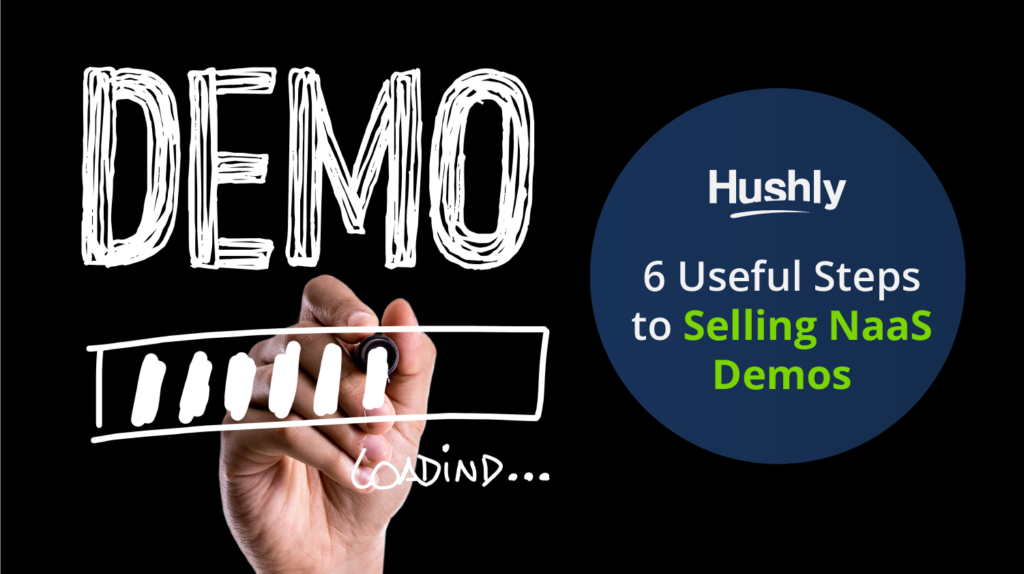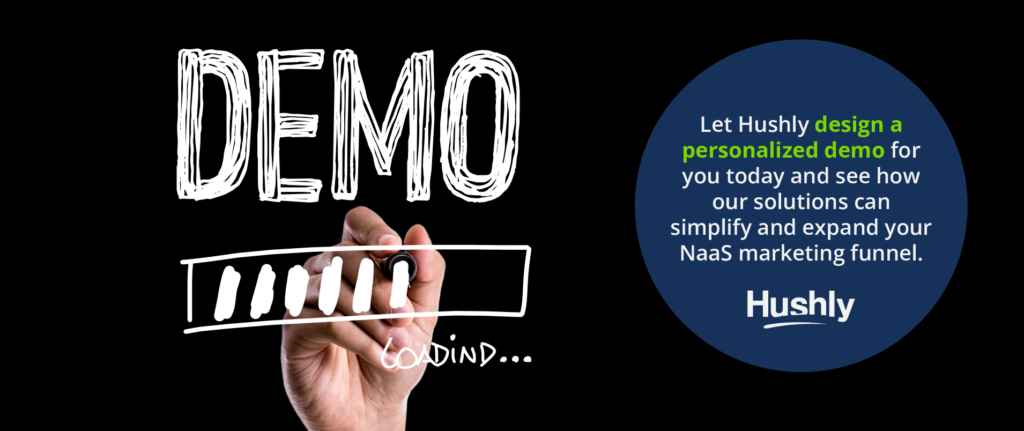Filters
Content Type
Topic
6 Useful Steps to Selling NaaS Demos
Your sales team has successfully scheduled a demo with a large client for whom your company can offer an efficient solution. It’s a little win that can often feel like a big one.
At this critical juncture, your biggest need is to present your product as the solution their company has been waiting for.
This does not mean an hour-long information dump where you cram in as many features as possible. Instead, you’ll need to determine how your product solves this buyer’s problem. Then, you’ll want to figure out how to deliver this solution convincingly to keep the sales process moving.
To help you with this, we’ve put together a 6-step guide that will help you learn how to demo a product.

1. Identify Pain Points through Front-End Discovery
Once you’ve contacted the buyer, you’ll need to ask smart questions to get to the bottom of their problems and then learn how to convey your solutions convincingly.
You need to know a lot about the buyer before effectively selling to them. Gather key information such as:
- Who the buyers are that you’ll need to convince.
- The company’s industry & niche.
- Their current technology stack.
- The specific pain points you can solve and how you can convincingly evoke them.
- Their current methods for overcoming these pains.
- The specific, measurable ways your solution is better than whatever they’re using now.
- What they already know about your solution.
Once you’ve completed your research, you’ll find that the presentation will already begin to take shape. You now know who to speak to, what to say, and how you’ll want to say it.
2. Use Personas to Identify Buyers and Learn How to Speak to Them
A key aspect of selling to someone is earning their trust.
Without trust, a prospect will see right through your efforts to sell them something. It doesn’t matter at this point whether your solution makes any sense: if a prospect feels you are coming on too strong, it will kill their interest faster than anything else you can do.
The only way to avoid this is by demonstrating your trustworthiness early and often. To achieve this, start by crafting a buyer persona that will help you learn about the buyer making contact.
3. Prepare a Flexible Presentation and Be Prepared to Make Changes on the Fly
Now that you’ve nailed down who you believe your buyer is and how you will speak to them, you can begin crafting a presentation.
When designing your presentation, start with notes on the specific pain points and how you plan to develop them during the presentation. Remember that your entire goal is to build trust by demonstrating your knowledge of the buyer and their industry.
Here are some examples of how to start a demo presentation:
- Open-ended questions are best. Get the customer talking. You want them to elucidate their challenges, so you don’t have to.
- The Socratic method is a powerful sales demonstration technique. Using it properly can get the customer to verbalize your solution and get them to feel like it was their idea, to begin with.
- Strive to present your solution as mutually beneficial: your prospect knows you’re there to get them to buy something. While you can’t stress that point, there’s no use in ignoring it, either.
- Keep things as simple as possible. Do not start listing off features individually, especially those not immediately relevant to their pain points.
- Keep the presentation solution-oriented.
Lastly, prepare to change things on the fly. Your customer may already know your solution and have an opinion formed that you’ll need to overcome. They may also be entertaining your competitors, so you’ll need to know who you’re competing with and the specific ways you believe you can outperform them.
4. Stress the Big Picture When It Comes to Price
The most unavoidable of steps to selling NaaS demos is this: all buyers will eventually want to know the bottom line.
“How much is this going to cost us?”
It’s critical at this point to present your product in terms of value, not cost. Your product is an investment for the company. Ideally, you’re there to form a long-term partnership that will lead to both their growth and yours.
Find a way to attach your product’s price to the solution it provides. For example, if your product saves resources that the company would have otherwise spent on physical server maintenance, you should absolutely mention this during the price conversation.
Stretch out the value for as long as possible and in every way, you can think of. This will allow you to paint the initial investment as a drop in the bucket compared to the total return they can expect from working with your company.
Keep things abstract where possible and, when discussing concrete numbers, ensure that the solution’s value is always at the forefront of the customer’s mind.
5. Keep the Sales Process Moving
One of the most critical sales demonstration techniques is to keep the sales process moving forward.
Regardless of how well you did, buyers are very unlikely to do this on their own. Unless you close on this meeting, the buyer still needs some convincing. Don’t hang up the call or leave the appointment without scheduling the next one.
6. Help the Buyers Make the Case to Close Themselves
Ideally, your presentation will have been made to all relevant stakeholders, meaning everyone who needs to be convinced was present at the meeting.
However, things don’t always work out this way. There may yet be approvals or internal discussions that need to happen with upper management or other stakeholders that weren’t present during your presentation.
Even if all stakeholders were present, unless the deal was closed, then that means someone somewhere still needs convincing.
To help with this and ensure that the sales process keeps moving even when you’re not involved, make it easy for those who were there during your presentation to make the closing case on their own. Forward video clips, screenshots, or notes directly to the meeting participants. Including things like:
- Features which the prospects were really interested in.
- Big picture value.
- Slides or moments that illustrate the value of your solution.
- Moments where your buyers got excited about your product and its possibilities.
Hushly’s ABM Tactics Are a Hidden Step to Selling NaaS Demos
The most effective B2B sales techniques in 2023 almost always involve account-based tactics.
Hushly can help optimize your NaaS sales funnels by using proven ABM techniques such as:
- Custom landing pages
- Dynamic content-hubs
- Visitor Analytics
- & Automated Engagement
Our targeted, account-based features will make it easy to stay connected with prospects even when you’re not directly communicating. This allows you to employ a low-pressure, value-driven sales funnel that is sure to develop trust and build authority in the eyes of your customers.
Let Hushly design a personalized demo for you today and see how our solutions can simplify and expand your NaaS marketing funnel.

The post 6 Useful Steps to Selling NaaS Demos appeared first on Hushly.


